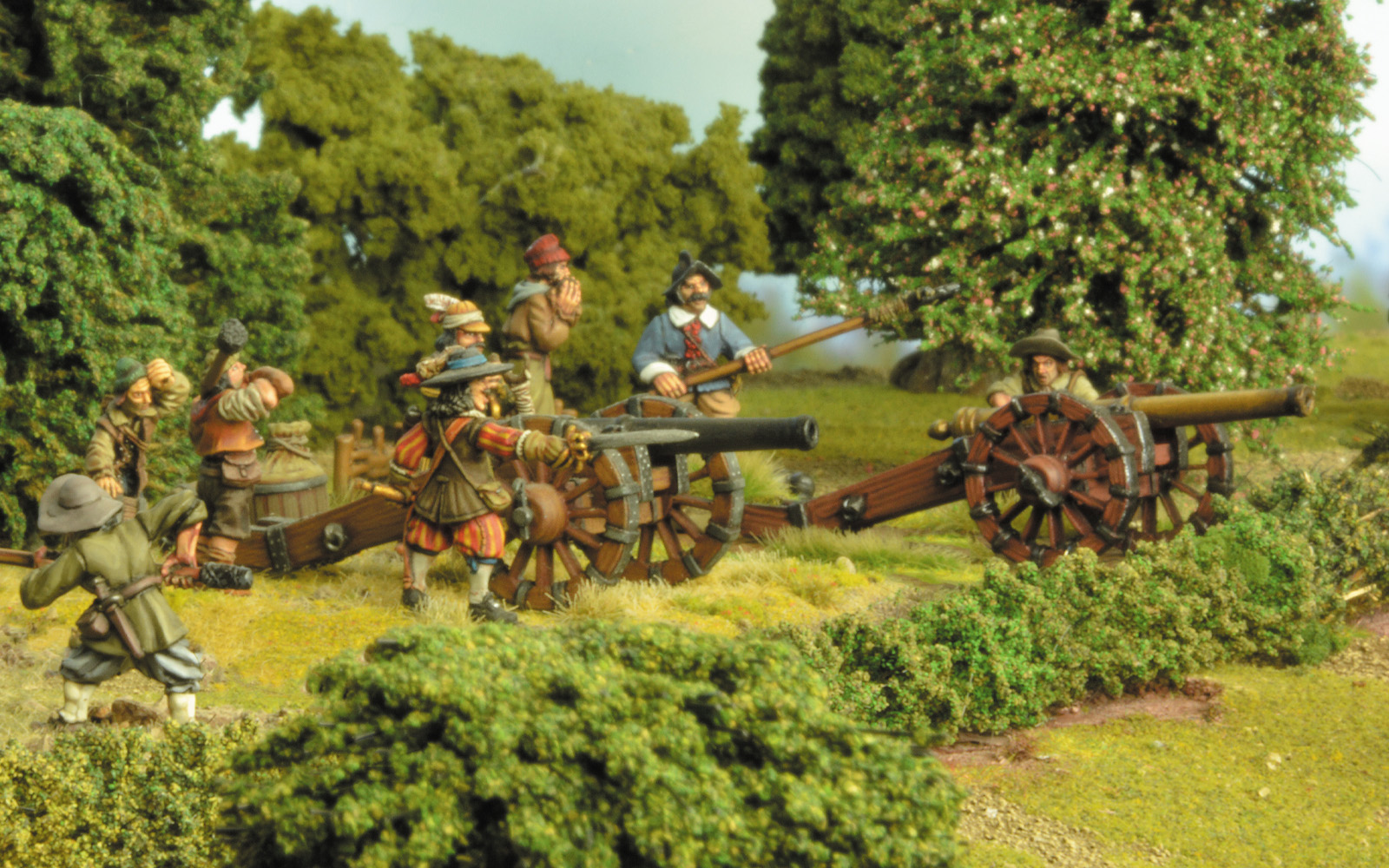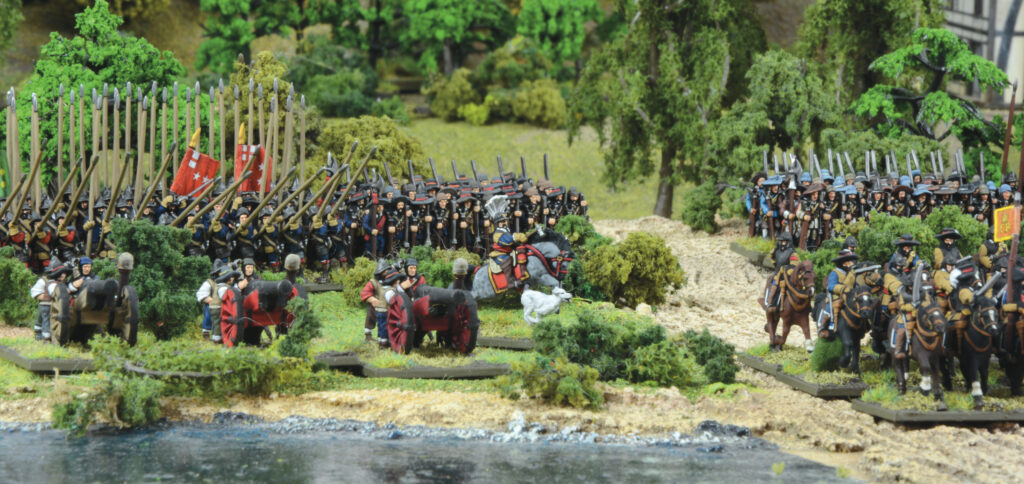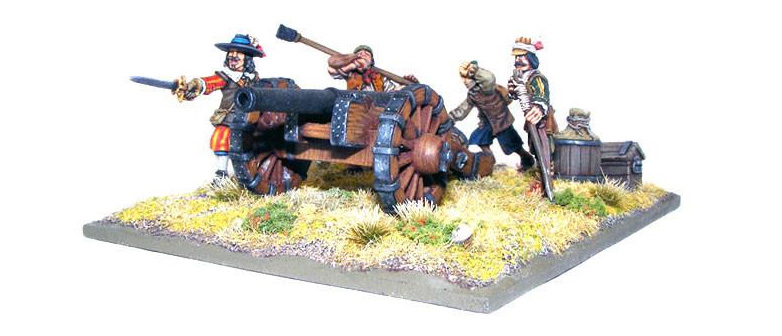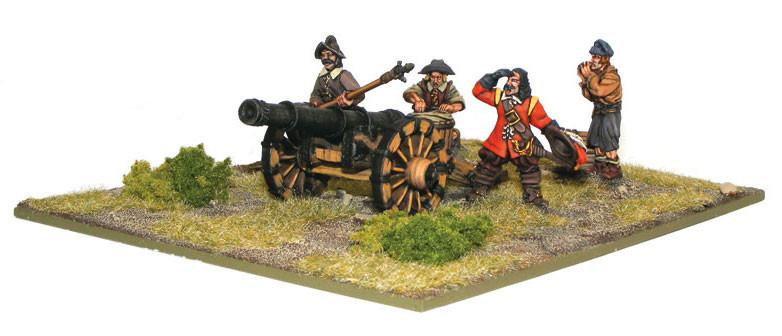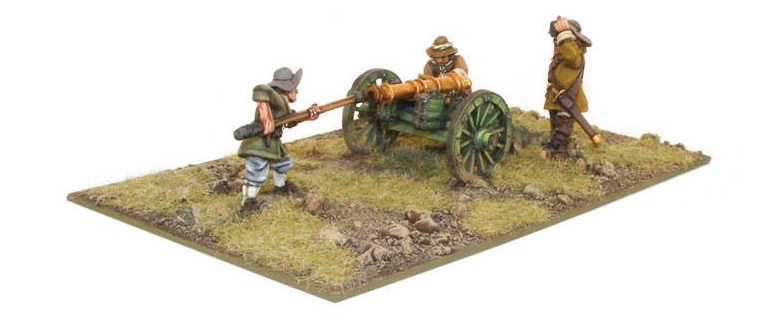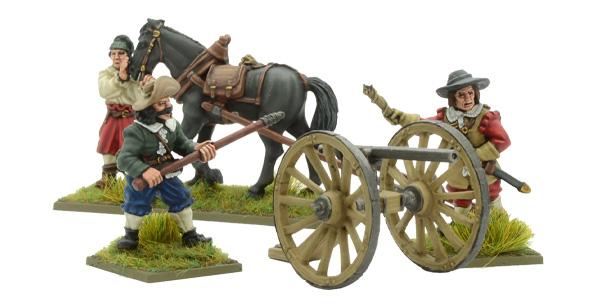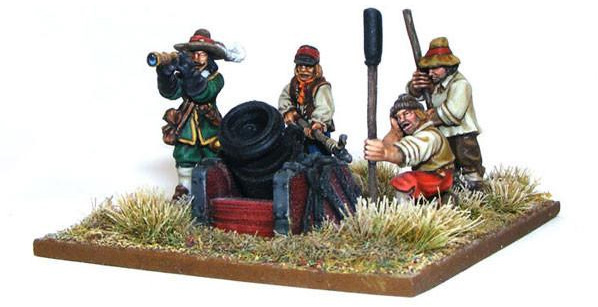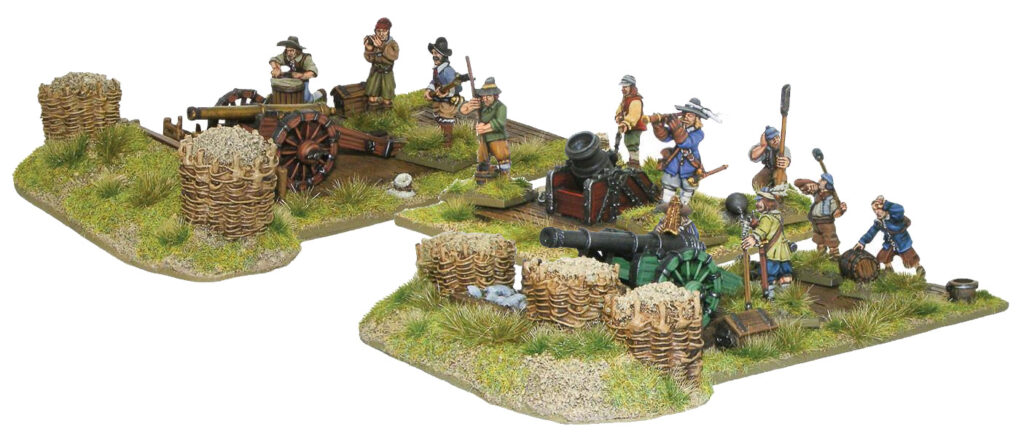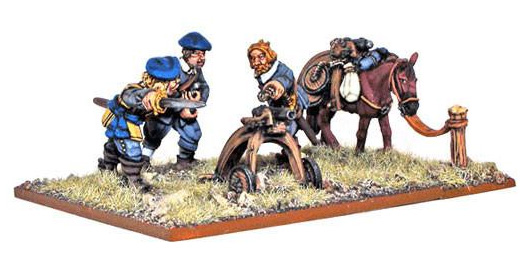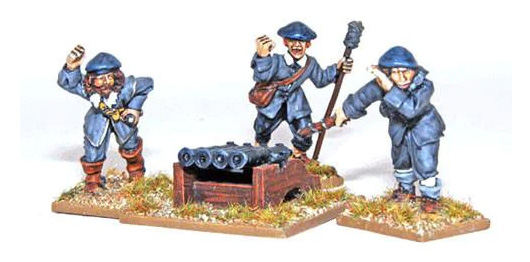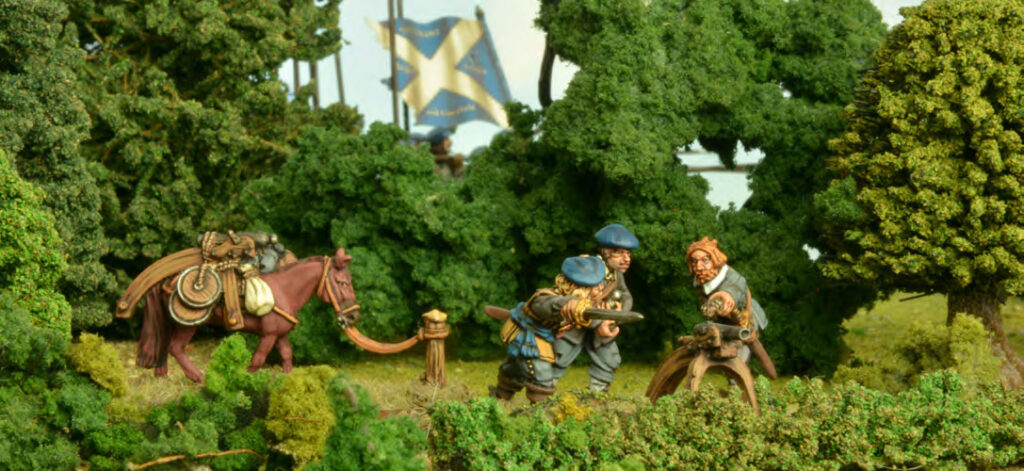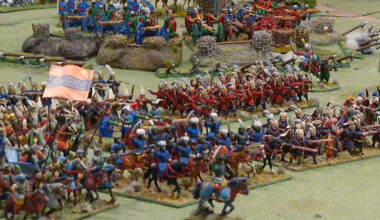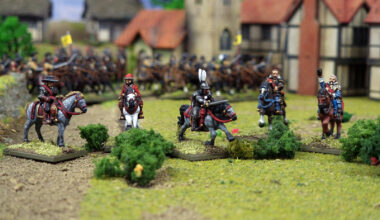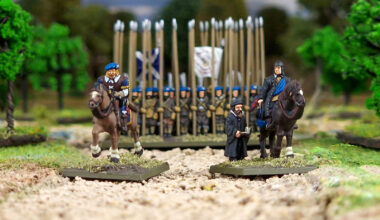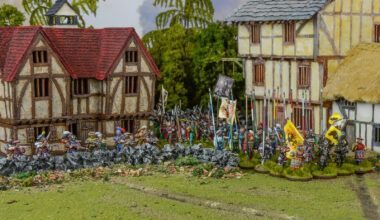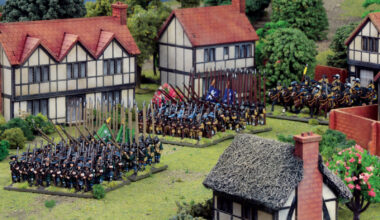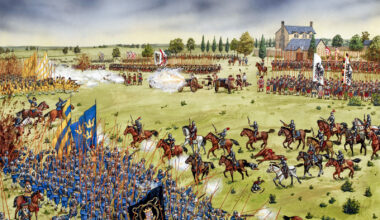As any self-respecting general will know, a battle just isn’t complete without some form of artillery. In earlier periods, one might have to make do with a trebuchet, or perhaps even massed formations of archers and slingers, but as we enter the early modern period in the mid-1600s, there are all sorts of goodies available. With European cannon having developed (and largely matured as a technology) throughout the preceding two centuries, the Pike & Shotte era would see some of the largest guns yet deployed take to the field. While not the fully developed artillery parks of the Napoleonic period, the big guns (or ‘ordnance’) of the seventeenth century definitely packed a punch!
While the late medieval ‘infantry revolution’ and development of handheld firearms had largely ended the age of the fully armoured knight (with cuirassiers being the last gasp of that particular tradition), artillery was busily signalling the downfall of the castle as the ultimate in defensive architecture. Across England and Europe, many ancient edifices that had stood for centuries were battered into submission by the new generation of increasingly powerful guns. It was in this field that artillery would make its presence most felt in the age of pike and shot, but it would also see increasing use in a battlefield anti-personnel role. Let’s take a look at the different types of gun available to Pike & Shotte commanders, in both 28mm and Epic Battles scale!
We’ll start with an absolute classic. The Saker was a mainstay of European artillery parks, used to batter enemy fortifications and infantry alike. Incredibly popular in English service, the design dated back to the mid-sixteenth century and had changed little in the intervening century. A smoothbore design firing a roughly 5-6 pound ball up to about 3,000 yards, they saw extensive service both on land and at sea and were the largest gun to really have any level of ‘tactical’ mobility (in that they could technically be moved about on the battlefield by their crew, although presumably not very far or very quickly!). At longer ranges and against fortifications, a round stone or iron ball would be fired, while against infantry at closer range they could employ ‘hailshot’, a lethal ad hoc mixture of scrap metal, rocks, and broken glass that was a precursor to later grapeshot.
Somewhat larger than the Saker was the Demi-Culverin, which, as the name suggests, was a smaller version of the Culverin. Really more of a static piece to reduce fortifications or acting as an anchor to a defensive position, the Demi-Culverin is a great option for representing Heavy Artillery, while the Saker is the ideal Medium. If your tastes run to something on the lighter side, there’s the Falconet (ably represented by our Light Gun), perfect for supporting your troops in the thick of the action. While not enormously powerful, it’s hard to overstate the psychological impact of having a cannon of any size pointed at you!
Pike & Shotte Epic Battles
Saker cannons and Falconet Light Guns can also be fielded in Epic Battles scale. Both types of ordnance can be found on the cavalry sprue.
There are two cavalry boxed sets to choose from, one representing troops of the English Civil Wars and one representing the Thirty Years’ War. Whichever you choose you’ll receive three Saker cannon and three Falconet light guns, as well as 30 harquebusiers, 6 cuirassiers, 3 cornets, 9 mounted dragoons, 15 dismounted dragoons, 18 commanded shotte, 3 mounted commanders, 3 ensigns on foot and a full-colour flag sheet pertinent to your chosen period.
While the majority of the era’s artillery was more or less static, commanders were certainly not blind to the advantages of having cannon that could be rapidly redeployed to where they were needed most! Enter the Galloper Gun, another light piece specifically designed to be pulled around the battlefield by a horse to provide urgent (well, urgent-ish!) fire support. These were the first iteration of what would later become known as ‘horse artillery’, and while not particularly powerful guns, the best gun in the world for a commander is the one they can actually have to hand in the moment!
From the small, to the… well, still technically quite small in some regards, but far more powerful, we have the mortar. The earliest iteration of arguably the most potent infantry support weapon, the basic function of the mortar of the pike and shot era was identical to that of its modern descendants – chucking explosives on a high, arcing trajectory! This enabled the stubby weapon to deliver indirect fire over the heads of friendly troops or castle walls, making it a vital asset on the battlefield. Due to the short but thick and heavily-cast barrel, the mortar was by no means a mobile weapon, but its capabilities made it a valuable part of any ordnance park.
Ordnance Battery
This set has three of the mighty weapons we’ve discussed – a Demi-Culverin, a Mortar and a Saker cannon – carefully protected by well-built gabion and wickerwork defences (cast in fantastically detailed resin), with the gunpowder barrels safely stowed in pits. Served by stoic crews and supported by a Sentinel, Master Gunner and an Engineer, these will wreak havoc in your opponent’s battle lines, and look great while doing so!
While the Scottish armies of the English Civil Wars often lacked the funding and much of the heavier equipment of their southern counterparts, they were still enthusiastic users of artillery wherever possible, employing all the types we’ve already discussed. They also had some rather more archaic designs still in service. These small-calibre, short-barrelled pieces were known as Frame Guns, and were a hangover from the late medieval ‘handgonnes’. Functionally a large musket mounted on the eponymous wooden frame, they could be towed by a horse, or more often simply picked up and carried by their crew, giving them fantastic mobility (albeit at the cost of weight of shot!). Even more archaic were the multi-barrelled frame guns, really no different to the medieval Ribault volley-guns that would not have been out of place a hundred and fifty years prior. While perhaps rather dubiously effective, they certainly would have been a concerning prospect for enemy troops. I’ve had the ‘pleasure’ of being fired on (without shot, of course) by such a weapon at a reenactment of the Battle of Tewkesbury, and even knowing that I was perfectly safe, it was a frankly unnerving experience – not that I’d ever admit that in print!
Pike & Shotte as a game does a fantastic job representing the rather unreliable artillery of the era, with ordnance being an essential part of any army, but not one that can win a game for you on its own (unless you’re really good at rolling dice!). This makes it a fascinating component of an army to try and get the most out of, as well as looking awesome on the tabletop, and is a great opportunity to add a baggage train to your army – something our CEO John has strong opinions on!
